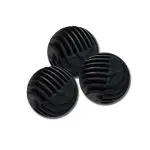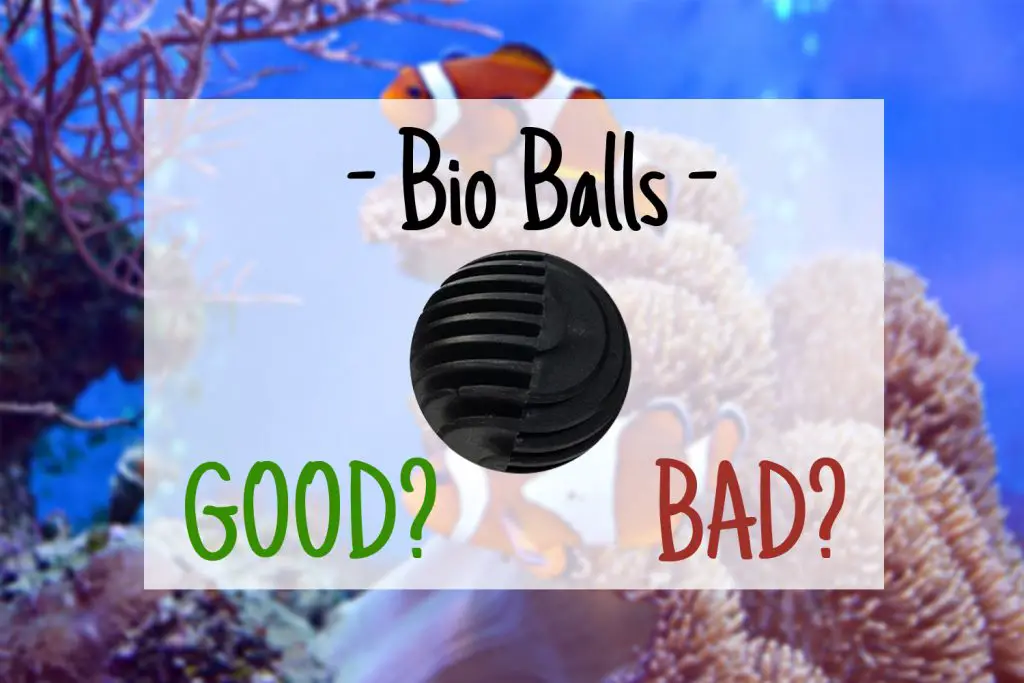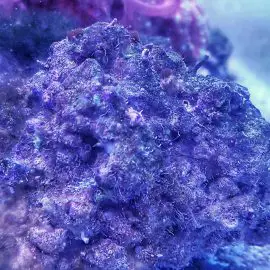Should I use Bio Balls in my sump?
Table of Contents
There are many saltwater aquarium owners who use bio balls in their sump, as previously, there wasn’t much else available on the market. Since technology has changed so much over the years there are always newer and better methods being trialled, there are now more efficient ways of reducing nitrates in reef tanks.
In short, to answer the question, yes you can use bio balls in your sump but there are better alternatives that have been developed specifically for saltwater aquariums.
Pressed for time? Check out what I'd recommend instead of using bio balls:
- Ceramic Bio-filter Media with Vast Surface Area AND Open-Flow Porosity
- Ammonia and Nitrite Removal
- Nitrate Reduction
What are bio balls?
They are small plastic ‘balls’ usually coloured black or blue. They are however, not solid and are made up of different shapes and patterns. This allows water to pass through.
The idea behind the patterns and shapes is that they provides a larger surface area for beneficial nitrifying bacteria to attach.
What are they used for?
Bio balls are used in saltwater tanks, freshwater aquariums, hydroponic systems, aquaponics and ponds. The purpose of bio balls is to act as filter media, by hosting the beneficial bacteria that help remove ammonia and nitrites from the water. This process these bacteria go through is called denitrification.
They are not intended to trap detritus and particles, and if you are using them in the sump, should be placed in the area of your sump least likely to come into contact with detritus, normally closest to the return. Detritus should be removed through other forms of filtration such as a filter socks or filter sponges.
What are they made of?
Bio balls are generally made from hard plastic such as polyethylene (PP).
Some on the market are filled with urethane foam but according to Aquarium Science, these do not unfortunately increase flow through the balls but do the opposite, therefore reducing their efficiency.
How do they work?
As mentioned above, they are used as part of the filtration method in aquariums, ponds and in setups used for hydroponics and aquaponics. Bio balls are used to remove nitrites and ammonia from the water in your aquarium due to beneficial nitrifying bacteria which attach to the balls filtering the water as it passes through. (You can read more about nitrifying bacteria and nitrates here.)
The balls were created to provide a habitat for the good bacteria but there are products available now that will provide a far greater surface area for these bacteria to attach to as well as other added benefits.
What is the alternative to using bio balls?
My suggestion, as mentioned above, would be MarinePure’s Biofilter media, which you can check out on Amazon.
This bio media is far more effective at removing nitrates as they are porous in comparison to plastic. They have been specifically developed for saltwater aquariums with one sphere having the same surface area as 1350 bio balls made of plastic!
Not only can they can be used in sumps, but canister filters and wet/dry filters too. It is worthwhile noting though that as higher nitrification occurs when there is more oxygen introduced into the water, it would be more beneficial to use the spheres in, for instance, a trickle filter as opposed to simply sitting in the sump.
I would definitely recommend using this particular bio media over plastic bio balls.
Bio balls ... Are they good or bad?
They have their place and are better off being used in freshwater aquariums and other setups such as ponds.
The reason? They have a reputation to work very effectively in trapping detritus. They will need to be cleaned regularly thereby reducing the number of beneficial bacteria each time they are cleaned. Forgetting to clean bio balls also means that they are effectively increasing nitrate levels, the opposite of what they should be doing.
In my opinion, you would be better off using some of the alternatives such as MarinePure’s Biofilter media or those mentioned in this article.
How to clean bio balls
If you do already have bio balls in your saltwater tank sump then you need to ensure that they are regularly cleaned to prevent a build-up of detritus which in turn leads to a spike in nitrates.
They should be washed during a regular water change using your aquarium’s water, not plain water. They should not be scrubbed or vigorously cleaned to avoid killing the bacteria that has colonised them. A few dunks in aquarium water should be enough to remove the larger detritus particles.
A good idea would also be to add a filter pad or sponge before the balls to collect as much of the detritus as possible. The filter pad or sponge will also need regular cleaning in tank water during your tank maintenance routine.
Conclusion
Bio balls are, in my opinion, better off for freshwater endeavours, not saltwater. I personally use Boxtech blocks as a means of biological filtration in my frag tank and the tank has never looked better.






